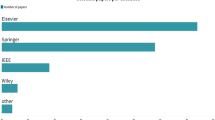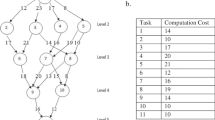Abstract
Energy management is important for choosing the right software recommendation to reduce the cost of service utilization. Time factor and CPU performance will be the challenges for feature analysis in smart devices like smartphones, tabs, and computers. The energy makes highly desirable needs for Priority Software which contains the recommendation for choosing right features to make the right choice of execution software. Different techniques are used to reduce the energy for considering software, but they are insufficient to recordation in which they are not used to prioritize the software utilization to make better device-driven hardware. The recommendations are considered to choose good quality software based on feature analysis from risk, cost, and requirement of the stakeholders’ which needs the priority of the requirements. To overcome this problem, an analytical hierarchy process of identifying software requirement prioritization based on optimized fuzzy logic social spider optimization (FLSP) is proposed to reduce energy consumption. By utilizing the software feature evaluation, the decision rule is attained to make priority using finite decision ranking (FDR). Initially, social spider optimization is intended to evaluate the spectral weight which is selected from the customer behavioral features and strategies to provide priority processing through fitness evaluation. The efficiency of these features depend on software factors which are evaluated to communal weight and rule with fuzzy logic mapping function (FLMF). Then the logical regression creates a stack to assign weights based on software features to make ranking to prioritize the utilization of software. The contrast of these approaches proves that measurement performance leads to higher efficiency and accuracy in software recommendation to use with best energy consumption.





Similar content being viewed by others
References
Beg MR, Abbas Q, Verma RP (2008) An approach for requirement prioritization using b-tree. International Conference on Emerging Trends in Engineering & Technology, Vol. 1, pages 1216–1221
Beg MR, Verma RP, and Joshi A (2009) Reduction in the number of comparisons for requirement prioritization using b-tree. In Advance Computing Conference, 2009. IACC 2009, IEEE International, pages 340–344. IEEE
Lehtola L, Marjo K (2006) Suitability of requirements prioritization methods for market-driven software product development. John Wiley & Sons, Ltd.
Aasem M, Ramzan M, Jaffar A (2010) Analysis and optimization of software requirements prioritization techniques. 2010 International Conference on Information and Emerging Technologies. IEEE
Rajasekaran RG, Manikandaraj S, Kamaleshwar R (2017) Implementation of machine learning algorithm for predicting user behavior and smart energy management, 2017 International Conference on Data Management, Analytics and Innovation (ICDMAI), Pune, pp. 24-30 2017. doi: https://doi.org/10.1109/ICDMAI.2017.8073480
Hafeez G, Alimgeer KS, Wadud Z, Khan I, Usman M, Qazi AB, Khan FA (2020) An innovative optimization strategy for efficient energy management with day-ahead demand response signal and energy consumption forecasting in smart grid using artificial neural network. IEEE Access 8:84415–84433. https://doi.org/10.1109/ACCESS.2020.2989316
Tonella P, Susi A, Palma F (2013) Interactive requirements prioritization using a genetic algorithm. Inf Softw Technol 55(1):173–187
Hafeez G, Alimgeer KS, Wadud Z, Khan I, Usman M, Qazi AB, Khan FA (2020) An innovative optimization strategy for efficient energy management with day-ahead demand response signal and energy consumption forecasting in smart grid using artificial neural network. IEEE Access 8:84415–84433. https://doi.org/10.1109/ACCESS.2020.2989316
Ahmad A, Shahzad A, Padmanabhuni VK, Mansoor A, Joseph S, Arshad Z. (2011) Requirements prioritization concerning geographically distributed stakeholders, in Computer Science and Automation Engineering (CSAE), 2011 IEEE International Conference on, pp. 290-294 2011
Lee H, Choi M, Park W, Lee I, Lee SH (2014) Design and implementation of energy application services for energy management technology, 2014 International Conference on Information and Communication Technology Convergence (ICTC), Busan, pp. 768-769 2014. doi: 10.1109/ICTC.2014.6983283
Khaliq A, Zulfiqar MA, Sohaib P (2018) Smart grid technology integration with smart phones for energy monitoring and management system, 2018 International Conference on Power Generation Systems and Renewable Energy Technologies (PGSRET), Islamabad, Pakistan, pp. 1-4 2018. doi: https://doi.org/10.1109/PGSRET.2018.8685995
Achimugu P, Selamat A, Ibrahim R, Mahrin MN (2014) A systematic literature review of software requirements prioritization research. Inf Softw Technol 56:568–585
Wikström R (2017) Innovative energy management to utilize energy-efficient solutions in the ICT infrastructure, 2017 IEEE International Telecommunications Energy Conference (INTELEC), Broadbeach, QLD, pp. 570-573 2017. doi: https://doi.org/10.1109/INTLEC.2017.8214198
Viola P, Babu AV (2013) Comparison of requirements prioritization techniques were employing different scales of measurement. ACM SIGSOFT Softw Eng Notes 38:1–10
Li Y, Zhang M, Yue T, Ali S, Zhang L (2017) Search-based uncertainty-wise requirements prioritization, In 2017 22nd International Conference on Engineering of Complex Computer Systems (ICECCS), 2017, pp. 80–89. https://doi.org/10.1109/ICECCS.2017.11
Liaqat RM, Ahmed MA, Azam F, Mehboob B (2016) A majority voting goal-based technique for requirement prioritization. In Automation and Computing (ICAC), 22nd International Conference on, pages 435–439 2016. IEEE
Pitangueira AM, Maciel RSP, Barros M (2015) Software requirements selection and prioritization using SBSE approaches: a systematic review and mapping of the literature. J Syst Softw 103:267–280
Ahmad KS, Ahmad N, Tahir H, Khan S (2017) Fuzzymoscow: A fuzzy-based MoSCoW method for the prioritization of software requirements, In 2017 International Conference on Intelligent Computing, Instrumentation and Control Technologies (ICICICT), pages 433–437 2017
Garg N., Agarwal P, Khan S (2015) Recent advancements in requirement elicitation and prioritization techniques. In Computer Engineering and Applications (ICACEA), 2015 International Conference on Advances in, pages 237–240. IEEE
Masadeh R, Hudaib A, Alzaqebah A (2018) Wow: a hybrid approach based on whale and grey wolf optimization algorithms for requirements prioritization. Adv Syst Sci Appl 18(2):63–83
Ahuja H, Batra U et al (2018) Performance Enhancement in Requirement Prioritization by Using Least-Squares-Based Random Genetic Algorithm. In: Panda B, Sharma S, Batra U (eds) Innovations in Computational Intelligence. Studies in Computational Intelligence, vol 713. Springer, Singapore, pp 251–263
Nidhra S, Satish K, Poovanna L, Ethiraj VS (2012) Analytical hierarchy process issues and mitigation strategy for a large number of requirements, In Software Engineering (CONSEG), 2012 CSI Sixth International Conference on, pp. 1-8 2012
Mougouei D, Powers DM (2017) Modeling and selection of interdependent software requirements using fuzzy graphs. Int J Fuzzy Syst 19(6):1812–1828
Kassab M, Kilicay-Ergin N (2015) Applying the analytical hierarchy process to system quality requirements prioritization. Innov Syst Softw Eng 11(4):303–312
Voola P (2017) Study of aggregation algorithms for aggregating imprecise software requirements’ priorities. Eur J Oper Res 259(3):1191–1199
Anand RV, Dinakaran M (2018) Whalerank: an optimization-based ranking approach for software requirements prioritization. Int J Environ Waste Manag 21(1):1–21
Author information
Authors and Affiliations
Corresponding author
Additional information
Publisher’s note
Springer Nature remains neutral with regard to jurisdictional claims in published maps and institutional affiliations.
Rights and permissions
About this article
Cite this article
Kumar, K.J., Rajkumar, N. Improving energy-efficient management for identifying software requirement prioritization based on optimized fuzzy logic social spider optimization. Pers Ubiquit Comput 27, 1419–1428 (2023). https://doi.org/10.1007/s00779-021-01617-1
Received:
Accepted:
Published:
Issue Date:
DOI: https://doi.org/10.1007/s00779-021-01617-1




